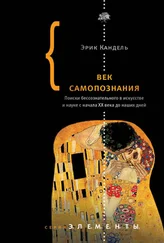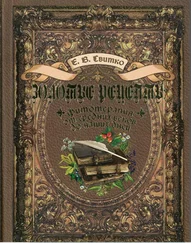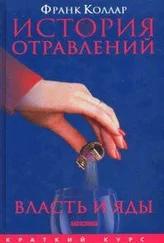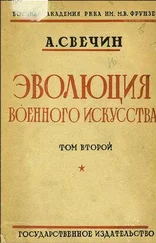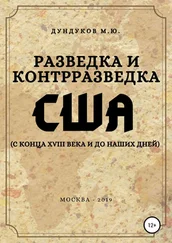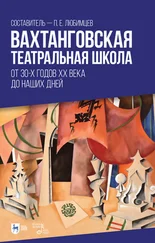Minoo Moallem, Between Warrior Brother and Veiled Sister: Islamic Fundamentalism and the Politics of Patriarchy in Iran (Berkeley, CA, 2005).
William H. Martin & Sandra Mason, «The Development of Leisure in Iran», из: Middle Eastern Studies 42, no. 2, 2006: 239—54; Aliakbar Jafari & Pauline Maclaran, «Escaping into the World of Makeup Routines in Iran», из: Sociological Review 62, no. 2, 2014: 359—82; http:// www.cosmeticsdesign-asia.com/Market-Trends/Iran-cosmetics-market-begins-to-boom-again.
«A Manifesto on Women by the Al-Khanssaa Brigade», transl. and edited by Charlie Winter, Feb. 2015, for Quilliam, a counter-extremist thinktank, http://www.quilliamfoundation.org/wp/wp-content/uploads/publi-cations/free/women-of-the-islamic-state3.pdf, цитата со с. 14, 21.
Özlem Sandikci & Sahver Omeraki, «Globalization and Rituals: Does Ramadam Turn into Christmas?» Advances in Consumer Research 34, 2007: 610—15; Rakesh Belwal & Shweta Belwal, «Hypermarkets in Oman: A Study of Consumers» Shopping Preferences», из: International Journal of Retail and Distribution Management 42, no. 8, 2014: 717—32.
Johanna Pink, ed., Muslim Societies in the Age of Mass Consumption (Newcastle upon Tyne, 2009); Leor Halevi, «The Muslim Xbox» (31 May 2013), из: Reverberations: New Directions in the Study of Prayer , http://forums.ssrc.org/ndsp/2013/05/31/the-muslim-xbox/; andhttp://www.islamicbookstore.com/publisher-goodword-books. html.
http://www.worldhalalsummit.com/the-global-halal-arket-stats-trends/; Jonathan Wilson et al., «Crescent Marketing: Muslim Geographies and Brand Islam», из: Journal of Islamic Marketing 4, no. 1, 2013: 22–50.
В этом параграфе я ссылаюсь на великолепное исследование: Charles Hirschkind, The Eth-ical Soundscape: Cassette Sermons and Islamic Counterpublics (New York, 2006); см. также: Charles Hirschkind, «Experiments in Devotion Online: The YouTube Khutba», из: International Journal of Middle East Studies 44, no. 1, 2012: 5—21.
Özlem Sandikci & Guliz Ger, «Veiling in Style: How Does a Stigmatized Practice become Fashionable?» из: Journal of Consumer Research 37, no. 1, 2010: 15–36. Критические голоса из Стамбула: Elif IzberkBilgin, «Infidel Brands: Unveiling Alternative Meanings of Global Brands at the Nexus of Globalization, Consumer Culture and Islam», из: Journal of Consumer Research 39, no. 4, 2012: 663—87.
Цитата из: Carla Jones, «Materializing Piety: Gendered Anxieties about Faithful Consumption in Contemporary Urban Indonesia», из: American Ethnologist 37, no. 4, 2010: 617—37, на с. 619. Сравните: http://www.noor-magazine.com/2014/10/shadow-of-preppy/.
См. www.oceanconservancy.org.: «The Ocean Trash Index» (2012).
По американским данным, см.: доклады Агентства по охране окружающей среды США, по британским данным, доклады WRAP: http://www.epa.gov/epawaste/nonhaz/munici-pal/pubs/msw_2010_rev_factsheet.pdf; www.wrap.org.uk/media_centre/key_facts/ index.html.
Vance Packard, The Waste Makers (London, 1961), цитаты на с. 6–9, 236 f.
Susan Strasser, Waste and Want: A Social History of Trash (New York, 1999), 10, 16, 21.
D. C. Walsh, «Urban Residential Refuse Composition and Generation Rates for the Twentieth Century», из: Environmental Science & Technology 36, no. 22, 2002: 4936—42.
Jacob & Wilhelm Grimm, Deutsches Wörterbuch , at: http://dwb.unitrier.de/de/; Sabine Barles, L’Invention des déchets urbains: France, 1790–1970 (Seyssel, 2005), 229—31; Ludolf Kuchenbuch, «Abfall: Eine stichwortgeschichtliche Erkundung», из: Mensch und Umwelt in der Geschichte , eds. J. Calließ, J. Rüsen & M. Strieg-nitz (Pfaffenweiler, 1989); John Hollander, «The Waste Remains and Kills», Social Research 65, no. 1, 1998: 3–8; а также: John Scanlan, On Garbage (London, 2005).
William Rathje & Cullen Murphy, Rubbish: The Archaeology of Garbage (New York, 1992).
Suzanne Raitt, «Psychic Waste: Freud, Fechner and the Principle of Constancy», из: Gay Hawkins & Stephen Muecke, eds., Culture and Waste: The Creation and Destruction of Value (Lanham, MD, 2003), 73–83.
Kevin Hetherington, «Secondhandedness: Consumption, Disposal and Absent Presence», Environment and Planning D: Society and Space 22, 2004: 157—73, на с. 159.
Mary Douglas, Purity and Danger: An Analysis of the Concepts of Pollution and Taboo (London, 1966), 44. Ее подход определил выставку по грязи и мусору при благотворительном фонде Wellcome Trust в Лондоне в 2012 году. Определение «мусора» как «вещи в неправильном месте» использовалось и викторианцами, и лордом Палмерстоном в 1852 году. См. также: Zsuzsa Gille, From the Cult of Waste to the Trash Heap of History: The Politics of Waste in Socialist and Post-socialist Hungary (Bloomington, IN, 2007); а также: Gavin Lucas, «Disposability and Dispossession in the Twentieth Century», из: Journal of Material Culture 7, no. 1, 2002: 5—22.
Цитата из: M. A. Jinhee Park, «Von der Müllkippe zur Abfallwirtschaft: Die Entwicklung der Hausmüllentsorgung in Berlin (West) von 1945 bis 1990», PhD thesis: Technische Universität Berlin, 2004), с. 22, перевод мой.
C. A. Velis, D. C. Wilson & C. R. Cheeseman, «Nineteenth-сentury London Dustyards: A Case Study in Closedloop Resource Efficiency», из: Waste Management 29, no. 4, 2009: 1282—90.
Manuel Charpy, «Formes et échelles du commerce d’occasion au XIXe siècle: L’Exemple du vêtement à Paris», Revue d’histoire du XIXe siècle 24, 2002: 125—50.
Barles, L’Invention des déchets urbains , 32—4.
William L. Rathje, «The Garbage Decade», из: American Behavioral Scientist 28, no. 1, 1984: 9—29.
Цитаты из: Martin Melosi, Garbage in Cities: Refuse, Reform and the Environment, 1880–1980 (College Station, TX, 1981), 23.
Barles, L’Invention des déchets urbains , 167—9.
См. Hildegard Frilling and Olaf Mischer, Pütt un Pann’n: Geschichte der Hamburger Hausmüllbesei-tigung (Hamburg, 1994). См. далее: Heather Chappells & Elizabeth Shove, «The Dustbin: A Study of Domestic Waste, Household Practices and Utility Services», из: International Planning Studies 4, no. 2, 1999: 267—80.
Читать дальше
![Франк Трентманн Эволюция потребления [Как спрос формирует предложение с XV века до наших дней] обложка книги](/books/403210/frank-trentmann-evolyuciya-potrebleniya-kak-spros-fo-cover.webp)


